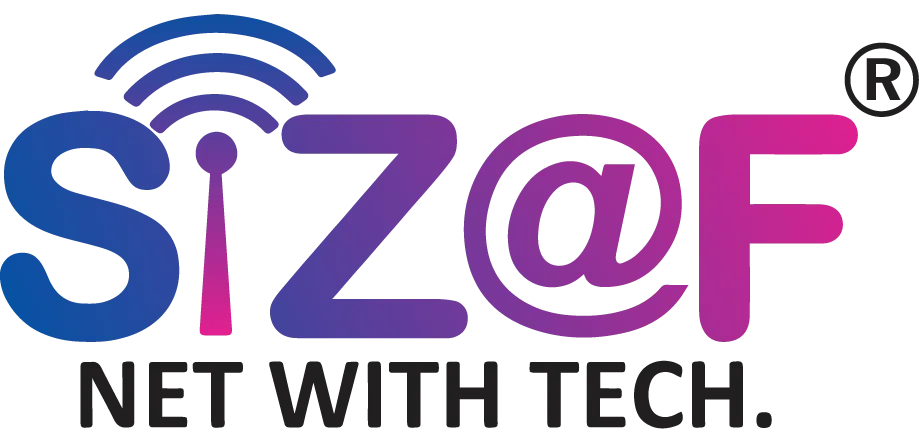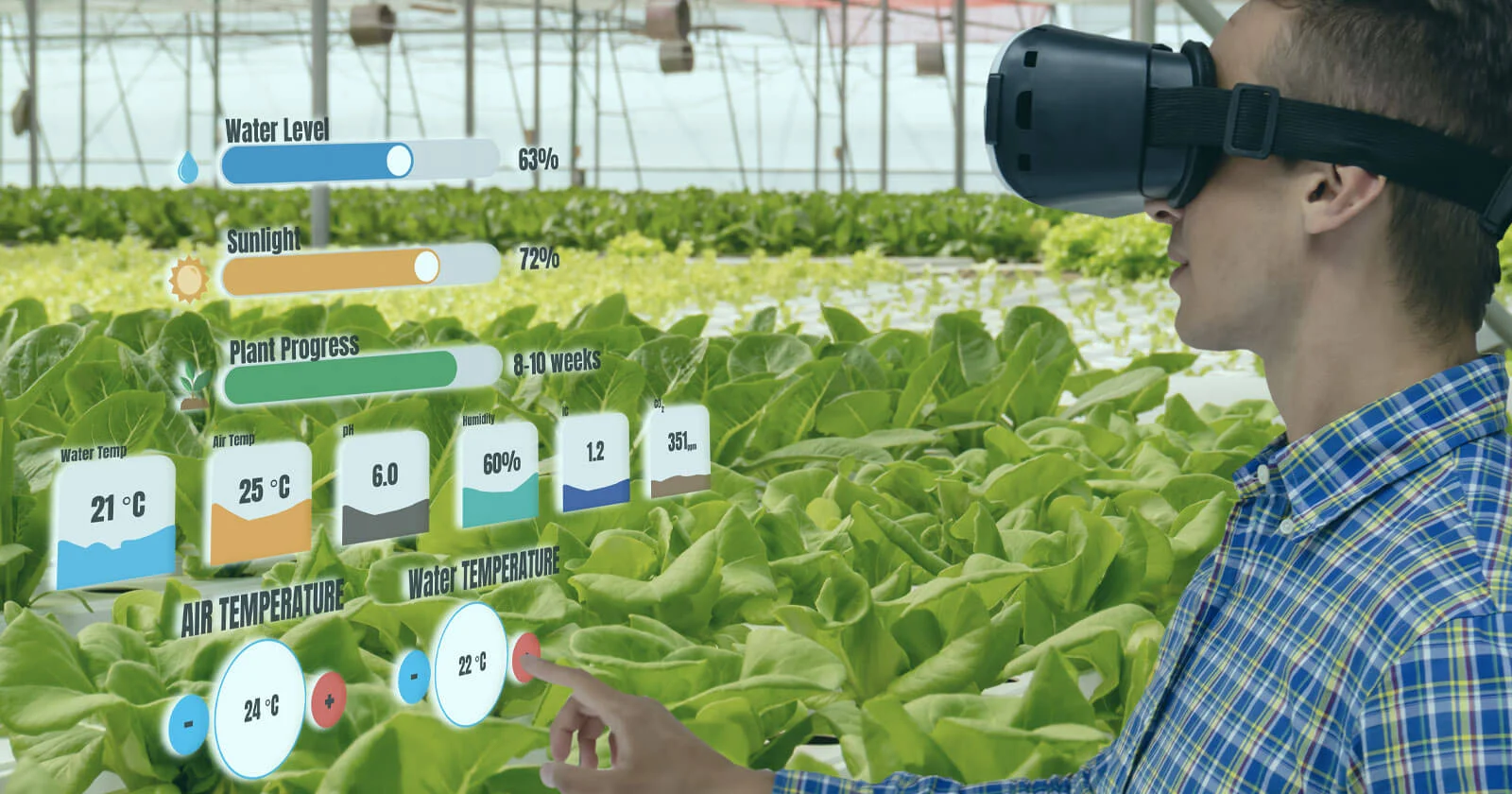To begin, the days of farming being limited to tractors, dirt, and labor are over. Farming is going digital, and quickly. One of the world’s most technologically advanced sectors in 2025 will be agriculture. In addition to labor shortages and erratic climate patterns, the world’s increasing food demand has forced farmers to embrace innovative technologies.
Digital agriculture, or “smart farming,” is more than just a fad. Examples include supply chain traceability via blockchain, AI-powered crop monitoring, and IoT-enabled irrigation systems. It’s required.
The most important technologies that are changing farming in the future are examined in this blog, along with the significant contributions that tech partners like Sizaf Infocomm are making to this change.
1. IoT Sensors and Smart Irrigation

Water remains one of agriculture’s most critical—and frequently mismanaged—resources. The introduction of IoT (Internet of Things) sensors in modern agriculture marks a significant shift toward data-driven resource management. These sensors, once embedded in the soil, continuously monitor variables such as moisture content, temperature, and humidity in real time.
Key advantages include:
– Potential reduction of water waste by as much as 50%
– Prevention of both over- and under-watering scenarios
– Automated alerts for drought conditions or excessive rainfall
For instance, a farmer in Kedah, Malaysia employs a smart drip irrigation system. This system activates automatically when soil moisture drops below optimal thresholds, resulting in the conservation of thousands of liters of water each week. This example underscores the practical impact of IoT-enabled irrigation on water sustainability in agriculture.
2. AI for Crop Health and Yield Prediction

Artificial intelligence in agriculture functions as a highly sophisticated digital agronomist, operating continuously to monitor and analyze crop conditions. By leveraging data streams from drones, soil sensors, and satellite imagery, AI algorithms can detect early signs of crop diseases and pest infestations, often before they become visible to the human eye. These systems also provide data-driven guidance on fertilizer application, optimizing input use according to specific soil conditions, and model potential yields to assist in planning and resource allocation.
Key Applications:
– Early identification of crop diseases and pest outbreaks
– Precision fertilizer management informed by real-time soil analysis
– Predictive yield modeling to support harvesting and distribution strategies
3. Drones and Satellite Imaging

Modern agricultural practice has witnessed a significant shift with the integration of aerial technologies—namely, drones and satellite imaging. These tools offer more than just visual records; they provide actionable data that can redefine crop management.
Key applications include:
– Real-time crop mapping, enabling dynamic monitoring of agricultural fields
– Utilization of NDVI (Normalized Difference Vegetation Index) to assess plant health and vigor
– Rapid post-event damage assessment, particularly following storms or flooding
When combined with artificial intelligence, these imaging technologies facilitate highly targeted interventions. For instance, pest control measures can be applied precisely where issues are detected, minimizing unnecessary chemical use.
📌 Sizaf Tip: A growing number of agricultural startups now offer drone analytics platforms with integrated cloud-based dashboards. Sizaf is well-positioned to assist in the deployment and ongoing management of such services.
4. Blockchain in the Supply Chain

Consider the journey of agricultural products such as rice or fruit. The integration of blockchain technology within the supply chain enables precise tracking at every stage, from the initial planting of seeds to the final placement on retail shelves.
Key Benefits:
– Verifies the authenticity and quality of goods.
– Reduces the risk of counterfeit products entering the market.
– Strengthens trust among farmers, distributors, and consumers.
For exporters and agribusinesses, this system supports regulatory compliance and may result in more favorable pricing within international markets. Blockchain thus serves as a critical tool for enhancing transparency and accountability throughout the agricultural supply chain.
5. Smart Farm Management Platforms

Modern agricultural operations have evolved far beyond traditional manual methods. Digital platforms such as FarmLogs, AgriWebb, or customized ERP systems now play a central role in farm management. These platforms enable users to:
– Track inventory with precision
– Oversee financial operations
– Monitor weather conditions, crop cycles, and equipment status in a centralized interface
Notably, these solutions are often cloud-based and accessible via mobile devices, which greatly enhances operational efficiency for teams working in the field.
💡 Sizaf Insight: With an effective IT partnership, even small-scale farms can implement tailored management systems that are comparable to those utilized by large agribusiness corporations.
Sustainable Agriculture: Climate-Conscious Farming Practices
Adopting advanced agricultural technologies is not solely about maximizing crop yields; it also plays a pivotal role in minimizing environmental harm. By applying resources such as water, fertilizers, and pesticides with precision, farmers can substantially lower waste and curtail their overall carbon footprint. These practices align closely with the principles of regenerative agriculture, which emphasize soil health and ecosystem resilience.
Furthermore, governmental policies increasingly favor sustainable approaches, offering financial incentives to encourage the adoption of environmentally friendly technologies. This means that integrating smart solutions into farming operations benefits not only the environment but also provides tangible economic advantages for producers.
Conclusion: Agriculture’s Digital Transformation
Let’s be clear—modern agriculture isn’t just tinkering with technology anymore; digital innovation drives the entire industry. From precision planting to automated harvesting, and from data-driven forecasts to smarter sales, advanced tools now shape how farmers feed the world.
Regardless of scale—be it a multinational agribusiness or a smallholder operation—adopting smart farming techniques has become essential for optimizing productivity and sustainability. In short, the future belongs to those who embrace these advancements.
Interested in modernizing your agricultural practices? Sizaf Infocomm specializes in deploying IoT, cloud, and networking solutions tailored to specific crops, land, and climate conditions.
📞 Malaysia: +60 14-660 0012
📞 USA: +1 516 880 9996
Are you currently implementing smart technologies on your farm, or perhaps considering their adoption?
If you have questions, insights, or experiences—successful or otherwise
Please share them in the comments below.

